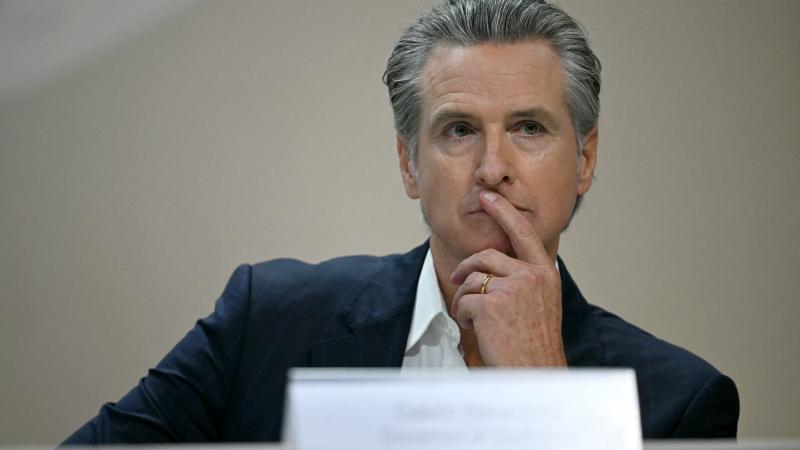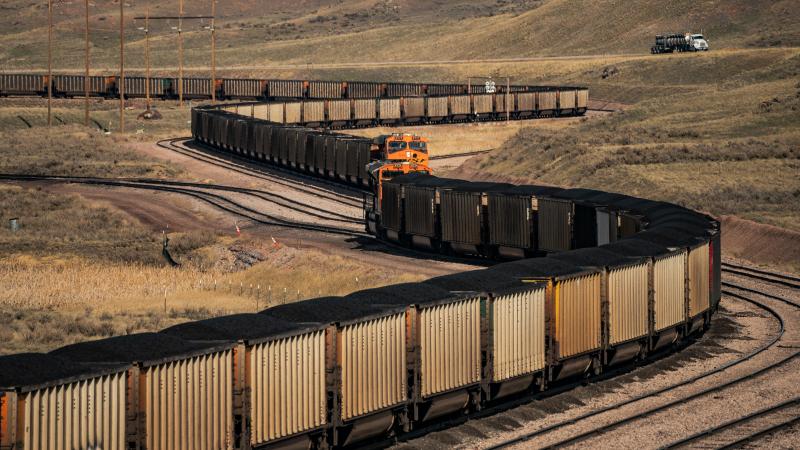West Coast communities prepare as the feds finalize areas for new floating wind farms
The experimental wind towers, rather than being built into the seabed, will float on the surface and be anchored to the seabed. They will stand as much as 1,100 tall.
The Bureau of Ocean Energy Management (BOEM) has finalized plans for 2.4 gigawatts of offshore wind development off the coast of Oregon in two Wind Energy Areas (WEA).
These areas “were developed following extensive engagement and feedback from the state, Tribes, local residents, ocean users, federal government partners, and other members of the public,” BOEM said in an announcement.
The average American home consumes approximately 1200 watt hours per hour. With one hour of winds, 2.4 gigawatts could power 2 million homes for that one hour. To power homes consistently, wind farms require backup from energy storage systems, nuclear, hydroelectric, coal-fired or gas-fired power plants.
Jen Hamaker, president of the Oregon Natural Resource Industries (ONRI), confirmed that BOEM held multiple meetings in the coastal towns nearest the WEAs, but she said it appeared the agency was just “checking off a box” as part of the public engagement requirements of the National Environmental Policy Act.
They were “supposed to be public meetings where we can give public comments and or ask questions, but they didn't allow that to happen,” Hamaker said. Hamaker also said that between 50 and 150 people would show up at the BOEM meetings and tried to voice their concerns, but the representatives of BOEM “ignored” the attendees.
“They have to hold these public meetings, but that doesn't mean that they're actually coordinating with local governments or with local people or with anything. They’re just telling us how they're going to do what they're going to do,” Hamaker added.
East Coast impacts
It’s a familiar story for environmental groups on the East Coast, which has so far borne the brunt of President Joe Biden’s plans for 30 gigawatts of offshore wind by 2030, which would be 12.5 developments like those planned off the Oregon coast.
East Coast environmentalists are raising concerns about the impacts of offshore wind on the North Atlantic Right whale. BOEM, they say, largely dismisses their concerns and takes no serious effort to even examine the risks of their decisions. They also accuse the agency of favoritism toward the offshore wind industry.
“Offshore wind is a once-in-a-generation opportunity to build a new clean energy industry, tackle the climate crisis, and create good-paying jobs, while ensuring economic opportunities for all communities,” the agency posted on X in December.
The wind farms off the West Coast are going to be very different from those on the East Coast. The seabed drops off much closer to the shore on the West Coast. So, the wind towers, rather than being built into the seabed, will float on the surface and be anchored to the seabed. They will stand as high as 1,100 feet tall, according to Bloomberg News.
Craig Rucker, president and co-founder of the Committee For a Constructive Tomorrow (CFACT), told Just The News that these types of turbines are unproven technology, leaving a lot of uncertainty of what their impacts might be. “They haven’t really been ramped up to a commercial scale… From our perspective, to try to put a good portion of your grid for an experimental technology is irresponsible and reckless,” Rucker said.
Besides the potential problems with the electricity supply, which according to assessments from the North American Electric Reliability Corporation, is already stressed from increased reliance on wind and solar power, Rucker said there are environmental impacts to consider.
The number of dead whales showing up on East Coast beaches has been increasing, and in the past month, the carcasses of two whales showed up on the East Coast, according to Fox News. A new study from the Save the Right Whales Coalition finds strong correlations between the increased whale deaths and offshore wind development.
With fewer than 340 North Atlantic right whales remaining — and fewer than 70 reproductive females — the trends are raising alarms with some environmental groups. “It’s garnered a lot of opposition,” Rucker said. “We think there ought to be a proper environmental impact statement. They [BOEM] will say they have done that, but in our opinion they haven’t done them properly.”
In a statement emailed to Just The News, BOEM said it conducted a "robust and transparent planning process," which included engagements beginning in 2011 with tribal, state and federal governments, local communities, and the fishing industry. According to BOEM, 98% of the areas recommended to be excluded from the WEAs due to the impacts to fishing were removed. BOEM also changed the boundary of the Brookings area to steer clear of a spot important for fish survey stock assessments and sensitive sea floor habitats like the Brush Patch, where bamboo coral lives.
The agency said these engagements will continue through the leasing process.
Varied opposition
Lawmakers representing Oregon’s coastal communities, calling themselves the Oregon Coastal Caucus, have been urging BOAM to prioritize the concerns of coastal communities. “Coastal community members and individuals tied to the fishing industry have overwhelmingly spoken with great opposition towards offshore wind. These concerns have been echoed by marine scientists, engineers, environmentalists, tribes, and coastal municipalities. We cannot move forward with offshore wind in Oregon until the needs and concerns of these groups have been addressed,” the caucus wrote in a letter to BOEM in January.
In a statement, Heather Mann, director of the Midwater Trawlers Cooperative, an industry group, called BOEM’s finalization of the WEAs a “slap in the face.” Mann said in a statement that “BOEM is a rogue federal agency pushing a dangerous agenda largely unchecked. BOEM will stop at nothing until our oceans are littered with wind turbines and all just to meet an arbitrary political deadline.”
Oregon tribal governments have also raised concerns about the impacts of offshore wind development on their cultural resources. “The Tribe supports any green economic development project that follows the law and does not harm local fishing jobs, our environment, or Tribal cultural resources. We cannot support offshore wind development until we are provided assurance that it will do good and not harm the Tribe, its members, and the greater community,” Tribal Council Chair Brad Kneaper, said in a statement in August.
Many unknowns
The communities on the West Coast that are facing the prospect of enormous towers off their coasts are up against a lot of unknowns with the floating wind turbines. Hamaker said that the ocean currents off the Oregon coast are turbulent due to the merging of cold Alaska currents from the north and the warmer currents from the south. There are also concerns about earthquakes and tidal waves.
“Oregon's going to be the guinea pig for that technology,” she said. The environmentalists aren’t sure how the tethered towers will impact whales and other marine animals, and the fishing industry isn’t sure how it will impact their businesses.
At the BOEM meetings, Hamaker said, these concerns brought traditional adversaries — environmentalists and the commercial fishing industry — together.
“For the first time, a lot of these people were hugging and shaking hands,” she said. She added that there is also concern about the impacts of the developments on forest land. The wind farms will need to be connected by the grid, and with the treelines coming right up to the coast, the transmission lines will need to cut through some of that land.
“Are we going to have to tear down a bunch of timber lands so that we can have these transmission lines all over the place?” she said. Hamaker continued, saying that across the various groups raising objection about the offshore developments is a general support for clean energy. They’re fears are over the speed at which these projects are moving forward without careful consideration of the impacts.
For the time being, she said, the Oregon Natural Resource Industries is trying to coordinate with other stakeholders and educate the public as much as they can with what they can learn as the developments move forward.
“We’re skipping and fetching here. We don’t know what to do,” Hamaker said.
The Facts Inside Our Reporter's Notebook
Links
- finalized plans for 2.4 gigawatts of offshore wind development off the coast of Oregon
- said in an announcement
- average American home consumes approximately 1200 watt hours per hour
- Oregon Natural Resource Industries
- plans for 30 gigawatts of offshore wind by 2030
- impacts of offshore wind on the North Atlantic Right whale
- largely dismisses their concerns
- the agency posted on X in December
- float on the surface and be anchored to the seabed
- according to Bloomberg
- already stressed from increased reliance on wind and solar power
- has been increasing
- according to Fox News.
- strong correlations between the increased whale deaths and offshore wind development
- and fewer than 70 reproductive females
- environmental impact statement
- wrote in a letter to BOEM in January
- Mann said in a statement
- Tribal Council
- said in a statement in August
















